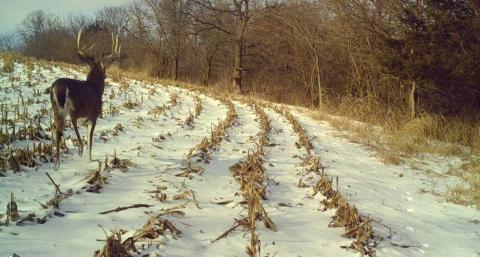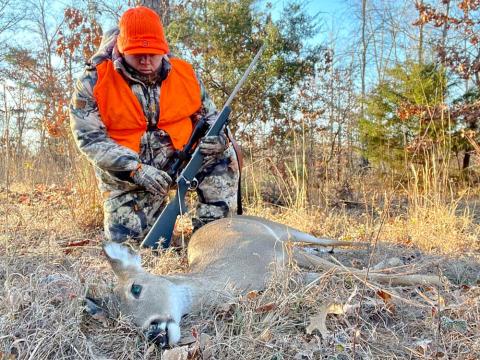Another Disease That Could Crash Your Deer Hunting Party
Mark Kayser
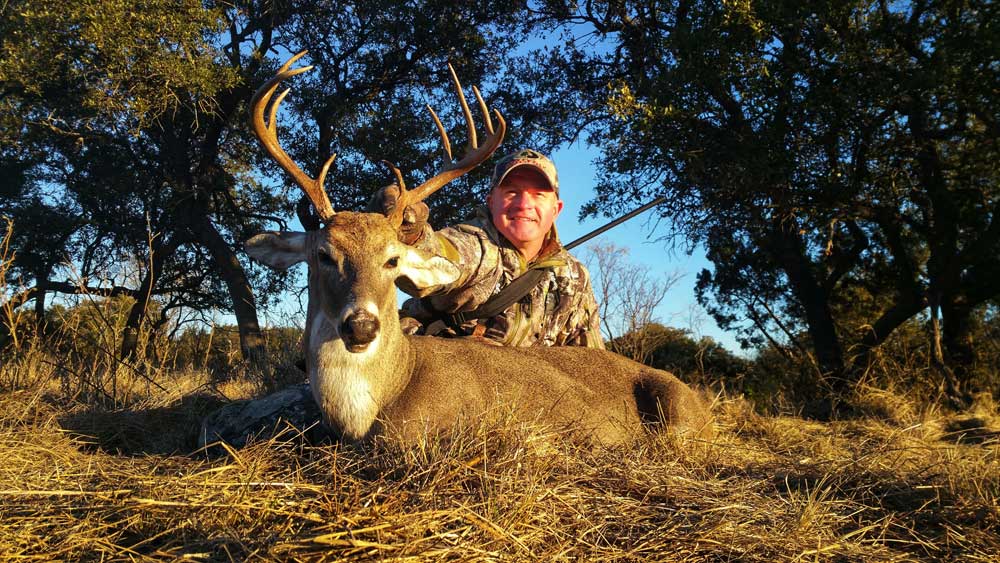
It had already been a long whitetail season with some success combined with some heartbreak as I unpacked my gear in Texas this past December. When I heard my hosts mention whitetail densities were down remarkably, the news immediately put a damper on the outlook for my hunt. I was in Texas to field-test a new Mossy Oak pattern, Rio, with aspirations to tag a Lone Star bruiser. That’s when I overheard the word “anthrax” and its mention created immediate reservations.
Growing up in South Dakota I experienced the frequent depression of whitetail deaths from disease. An unexpected outbreak of Epizootic Hemorrhagic Disease brought it on every few years. Spread by a tiny, two-winged midge, EHD can kill an infected animal within days, if not sooner. Infected animals acquire a high fever and hemorrhage internally, often seeking water for fever relief. This is the reason many carcasses are discovered near reservoirs, creeks and rivers.
Today I live in Wyoming, ground zero for another baffling and tragic disease: Chronic Wasting Disease. According to the Centers for Disease Control and Prevention, “as of January 2020, CWD in free-ranging deer, elk and/or moose has been reported in at least 24 states in the continental United States, as well as two provinces in Canada. In addition, CWD has been reported in reindeer and/or moose in Norway, Finland and Sweden, and a small number of imported cases have been reported in South Korea.”
Why is Wyoming ground zero? It was discovered just across the Colorado border and spread into southern Wyoming early in its history. Today, CWD is found across the state and in some hunt areas in the southeast corner, infection rates are nearing 30 percent. According to research from the University of Wyoming, once a population reaches an infection rate of 27 percent the herd is unable to sustain itself.
To say I’ve lived with whitetail diseases my entire life is an understatement and now I was staring at an additional hunting roadblock: anthrax.
Anthrax Opening
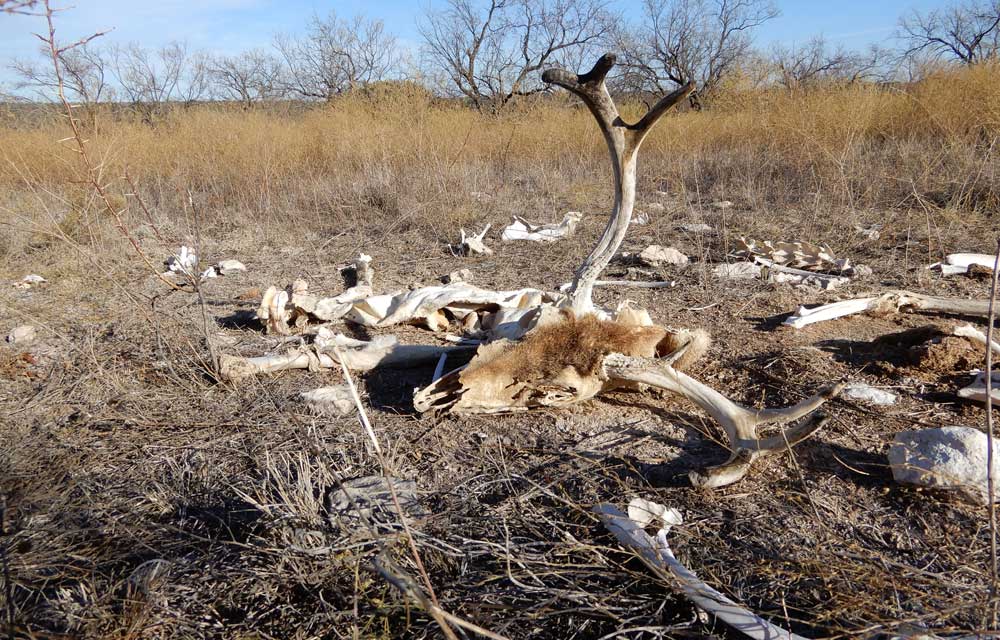
As a student of whitetail death, I understood the basics of CWD and EHD. My anthrax studies were a bit sketchy, but a quick refresher course provided me with enough to pass a semester exam.
Believed to have originated in Egypt and Mesopotamia, anthrax is an infectious disease caused by bacteria known as Bacillus anthracis. It is found naturally in soil and commonly affects domestic and wild animals around the world, but is still considered rare in the United States. You can only get anthrax if you come into contact with the bacteria. It is not contagious.
In fact, many scholars believe the 5th biblical plague affecting livestock was anthrax. Makes sense. Greece and Rome also recorded historic outbreaks of a disease likely to have been anthrax.
By the late 1800s the bacteria were being grown in labs and by the early 1900s it saw its first use as a biological weapon with further use in World War I. This weaponry research continued until the 1970s when a treaty was signed, but that didn’t stop an attack in America soon after 9/11. Those spores originated from a research lab and caused 22 illnesses and five deaths. Since then, most of the talk about anthrax includes livestock and whitetails with Texas being the hotbed.
Texas and Anthrax
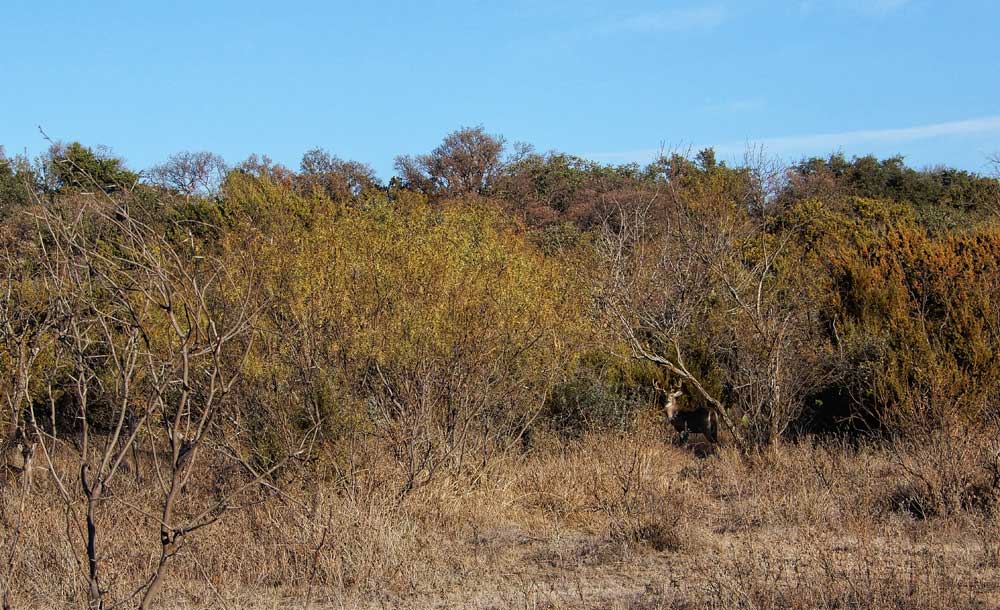
Texas deals with anthrax in whitetails more than any other state and the amount of information the Texas Parks and Wildlife Department posts on the subject clearly shows their concern. Most Texas outbreaks occur in the southwest and according to department information, you find it here the most.
“In recent years, cases have been primarily confined to a triangular area bounded by the towns of Uvalde, Ozona and Eagle Pass.”
It typically takes a “perfect storm” to stir the pot, literally. Speedy changes in climatic conditions, particularly deluges and drought in warm weather, bring on many cases. After the stirring of soil, the anthrax bacterium spores lie on the top tier of ground allowing livestock and wildlife alike to collect them during normal feeding patterns. Incubation may only take one or up to 10 days, but once the disease takes hold animals can die in less than four hours.
This means you likely won’t come across a live animal, but if you do find a lethargic, stumbling animal, especially one trying to get to water, stay away. Also stay away from dead animals as you can be infected in three different ways. Those methods include inhaling the spores, contact with the spores or a dead animal, and consumption of undercooked meat from an infected animal.
Despite being nearly 100 percent fatal in animal cases, you can be treated with antibiotics if anthrax is detected soon enough. You and animals can be vaccinated as well; however, it is expensive for livestock and not recommended for you unless you plan to vacation in an anthrax-rich environment. Cancel that trip now.
The biggest take away from all of this is to not touch any dead animals you may encounter. Next, immediately report the deaths to local officials, especially if you’re hunting in that corner of Texas or nearby. After that you could be in the same boat I found myself with some mental and tactical changes required to my whitetail hunting strategy.
The rosy-ranch scenario I hoped to hunt was tainted. If your plans allow you can always switch hunting locations. Even EHD typically doesn’t affect an entire state, but it can make several counties appear to be the new digs for the Grim Reaper.
Being stuck on a specific ranch in Texas meant a change in tactics for my hunt. With only a few days to hunt I decided to swap the Barnett Crossbow plans and replace them with a speed bow-i.e. my rifle. I also adjusted my trophy potential based on the success of earlier hunters and information the guides shared with me. Finally, I decided to simply make the best of a bad situation. The hunting may not have been abounding in antlers like previous years, but I was in Texas and not at my desk. That’s a huge upshot!
The 3-day hunt was full of deer sightings and I ended the adventure with a clean shot on a decent 5x5 Texas buck anyone would be proud to tag. After processing my buck I spent the last afternoon on the ranch hiking the hills and counting carcasses. I quit tallying after finding more than a dozen deer curled up under bushes in various states of decomposition. Mother Nature has her reasons for culling in such a cruel manner, but one thing is for certain. The whitetails of this ranch would rebound quickly and in a couple years anthrax would just be a memory until another “perfect storm.”
Sidebar: Mossy Oak Rio
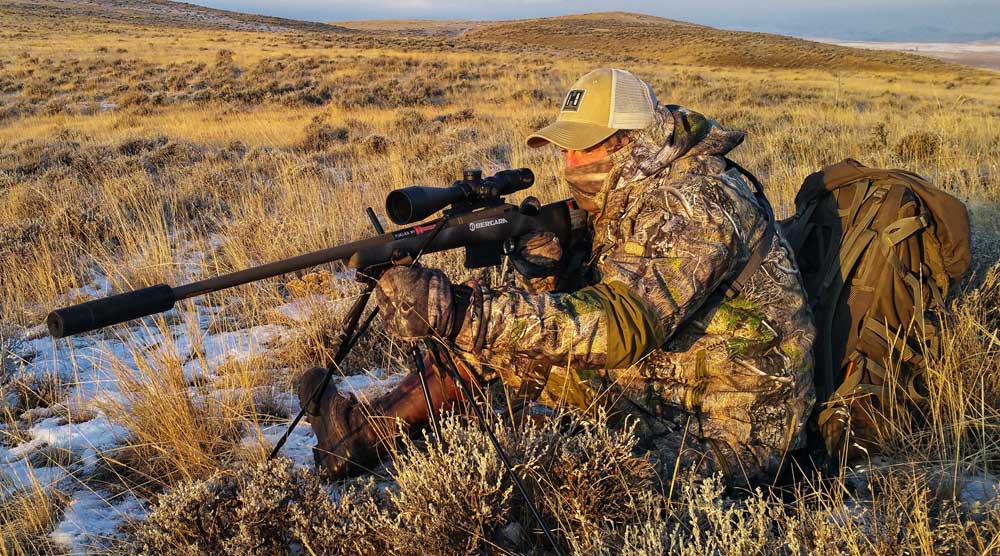
I’ve been a big fan of Mossy Oak Brush and never thought I would “brush” it aside for another pattern, but Mossy Oak does deliver. Their latest offering is labeled as Mossy Oak Rio. Its intended purpose is to aid hunters in the Southwest, so my first field test was in Texas. After ogling it a bit more I couldn’t help but think its worth would extend past the confines of the Southwest. I soon was testing it in the grasslands of the Great Plains and the backyard sagebrush basins of my Wyoming homeland with positive results.
Its wide range of adaptability to a variety of environments is due to enhanced photography techniques meshed into the pattern. Mossy Oak experts used well-defined images of mesquite tree trunks and limbs, combined with a blend of prairie grasses, sagebrush and evergreen vegetation to create the unique pattern. It disappears in a multitude of open and semi-open environments equally. Shadow patterns incorporated into the design further boost its invisibility factor.
Placed in a natural-looking landscape layout, the composition of plants blends anywhere you have grass, brush and branches. Yes, it works in the Southwest, but you’ll appreciate it anywhere that you may have used the senior Brush pattern in the past. Add it to your Mossy Oak arsenal of camouflage and you will become a fan too.
Centers for Disease Control and Prevention, Anthrax, CWD
www.cdc.gov
Texas Parks and Wildlife
www.tpwd.texas.gov


















